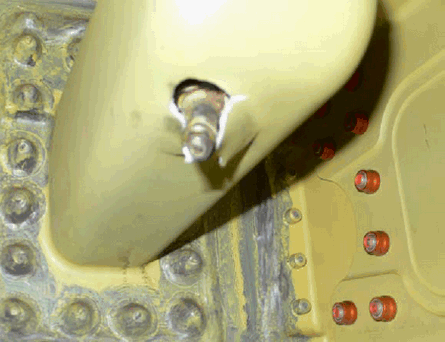The US FAA has ordered emergency inspections of wing leading-edge slat tracks on all Boeing Next Generation 737s after investigators discovered a loose bolt had pierced the fuel tank in the China Airlines 737-800 that was destroyed by fire in Japan on 20 August.
The emergency airworthiness directive issued by the FAA on 25 August requires operators to inspect main slat track downstop assemblies and slat track housings within 24 days and every 3,000 flight cycles thereafter.
The AD applies to all 737-600, -700, -800 and -900 series aircraft, including the newest member of the family, the 737-900ER.

The FAA says it has received reports of parts of the downstop assembly coming off the main slat track. In one case a nut fell into the track housing, or slat can, and during retraction the track made contact with the nut, puncturing the can. The operator reported finding fuel leaking from the drain hole in the slat can, the FAA says.
In the China Airlines incident, the AD says, loose parts of the downstop assembly punctured the slat can, which resulted in a fuel leak and ground fire that destroyed the aircraft.

The AD requires operators to inspect the slat track downstop to check for missing parts and verify proper installation, and to check the inside of the slat can for foreign object debris and damage.
In addition, a torque of 50-80in-lb must be applied to the nut on the downstop assembly.
The FAA says the emergency AD in an interim solution until a final action is identified.
Source: FlightGlobal.com
















